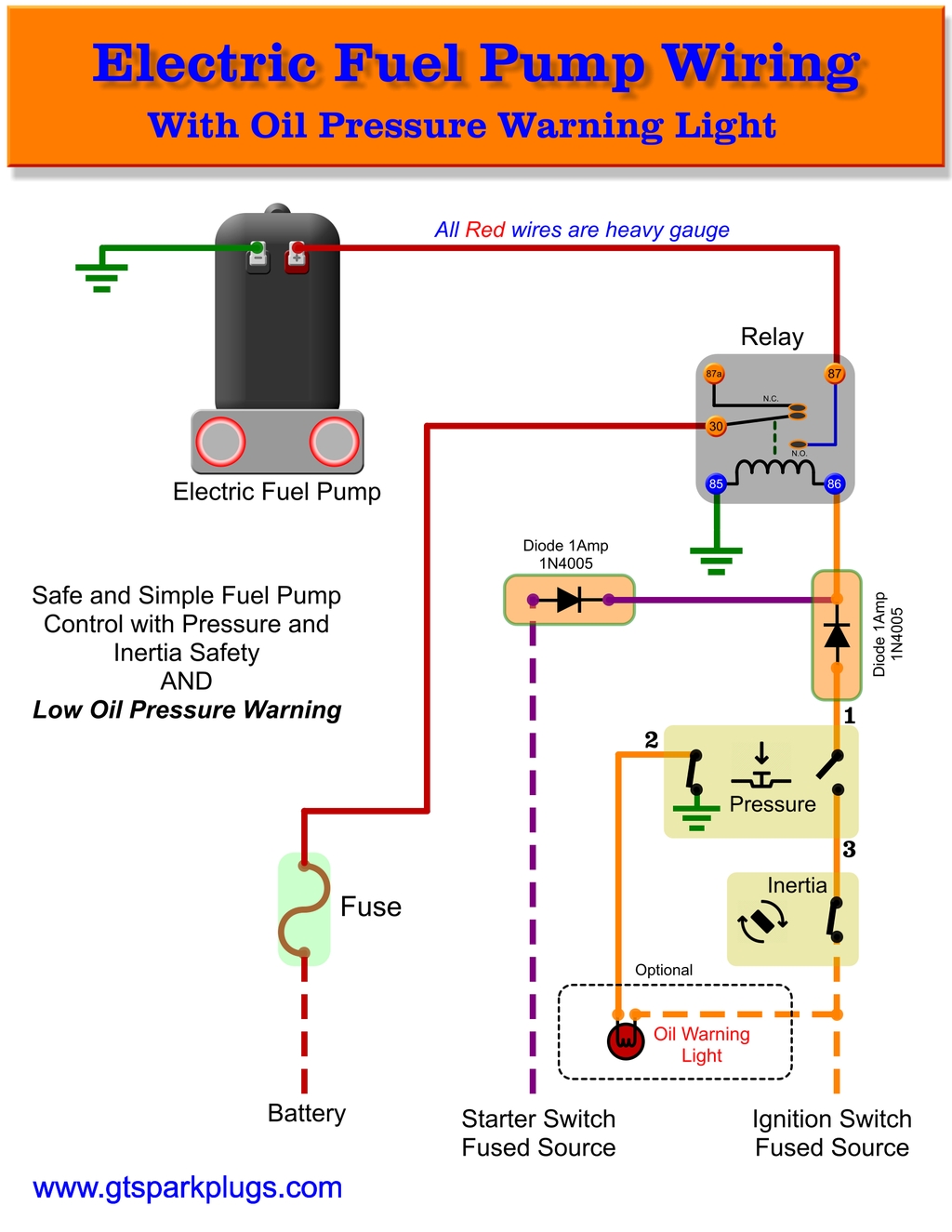- Home
-
Projects
General
- To Do
- Overview
- Fire Extinguisher
- Camera Mount
- Carb Modification
- Differential Stand
- Auxiliary Injector Driver
- SAM - Automotive Controller
- Speedhut Warning Light Adapter
- Speedhut Gauges
- Wilwood Pedal Upgrade
- Wireless Horn
- Motor Mount Bolting
- Jerico Shifter Fabrication
- Nitrogen Tire Filler
- Gear Marking Compound
- Roll Bar Fuel Pump Mount
- Multi-Camera Mount
- EFI Fuel Pump Mount
- CNC Master Cylinder Rebuild
- Harness anti-sub belts
Tiger
- Brakes
- Oil Filter Bracket
- Alternator Upgrade
- Mirror Upgrade
- Oil Pan
- Engine
- Transmission
- Suspension
- Shackle Upgrade
- Leaf Spring Bushings
- Rear End Swap
- Sway Bar Install
- Leaf Spring Plate
- Fuel Cell Mount
- Dashboard
- Lower Dash Pad
- Racing Seat Install
- Throttle Linkage Upgrade
- Electric Fan Upgrade
- Roll Cage
- Anti-Sub Belts
Excursion / Super Duty
- Power Steering
- Injector Cups
- Door Lock Actuator
- DVD Replacement
- Lift Gate Cylinder Replacement
- Front Brakes
- Shift Lever Replacement
- Steering Wheel Swap
- Steering Stabilizer Upgrade
Aston Martin
- Stereo Upgrade
GT40
- Fuel Pickups
Garage Professor
- Air Filter Flow Bench
- Cars
- Media
- Calculators
Electrical
- Wire Size
- Ohm's Law
- Dropping Resistor
Carburetors
- Carb Size
Wheels and Tires
- Wheel Offset
- Tire Size
- Camber Offset
- Offset To Backspace
- Backspace to Offset
Gears and Speed
- Spedometer Gear Size
- Gear, Shift Point and Speed
Chassis and Suspension
- Corner Weight Calculator
- Sway Bar Link Force
- Sway Bar Spring Rate
- Reference Library
General
- Overview
- Reading Spark Plugs
- Bolt Grade Marking
- Bolt Torque - Inch
- Bolt Torque Metric
- Socket Head Bolt Torque - Inch
- Introduction to Automotive Relays
- Horn Wiring
- Electric Fan Wiring
- Automotive Flashers
- Headlight Relay Conversion
- Steering Wheel Hub Patterns
- Fuel Pump Wiring
Firing Orders
- Ford 302HO-351W Firing Order
- Ford 260-289-302 Firing Order
- Ford 351C 351M 400M Firing Order
- Ford FE Firing Order
- Ford 429 and 460 Firing Order
- Chevy SB and BB Firing Order
- Chevy LSX Firing Order
- Power Stroke 7.3L Firing Order
- Mopar SB and BB Firing Order
- Ford Flathead Firing Order
- Ford V6
- Porsche Boxster
- Mini Cooper
- Porsche 911 Firing Order
- BMW Inline 6 Firing Order
- Datsun L-Series
- Pontiac V8
Valve Adjustment
- Ford 302 HO and 351W
- Ford 260, 289 and 302
- SBF Valve Layout
- BBC Valve Layout
Suspension
- Camber Examples
- Drive Shaft Angle
Sheet Metal
- Sheet Metal Gauge Guide
- Tools
General Fabrication
- Overview
- Bead Form
- Nutsert
- Time-Sert
- Flaring Tool
- Tire Bead Seat Tool
- Wire Rope Cutters
- Chain Breaker
- Bushing Remover
- Bearing Packer
- Knipex Snap Ring Pliers
Drilling and Punching
- Blair Rotabroach
- Blair Holecutter
- Safety Wire Drill Jig
- Hydraulic Hole Punch Kit
- Dzus Dimpler
Wheels and Brakes
- Useful Brake Tools
- Wheel Pattern Gauge
Rear End
- DIY Spanner Wrench
- DIY Pinion Wrench
- Links
- FLog
- About
Oil Pressure Switches The Key!
Their are many types of oil pressure switches, most common ones are normally closed. These WON'T WORK.
These common ones will not work as we need a Normally OPEN switch that closes when oil pressure crosses some threshold. In poking around the web I found the Wells Vehicle Electronics site.
The Wells site has listings for many different style of senders. The main thing we are looking for is 'NORMALLY OPEN' or 'NO', or a combination switch that has both a NO (Normally Open) and a NC (Normally Closed).
For most common applications the 2 Prong PS113/PS114 or 3 Prong PS118/PS122 will work. These are available in either 1/8" NPT or 1/4" NPT so be sure what you order. They are available in long reach as well as a few other threads and style of connectors and fittings. Check out the Wells site for selection.
Both the PS113/PS114 and PS118/PS122 have standard spade connectors that can save some money if you don't want to spend on the waterproof harness plug. The 3 Prong PS118/PS122 can replace the PS113/PS114 as it only has an additional circuit for a warning light. Otherwise they are the same.
My preference would be to get the harness for the PS118/PS122, which is a 3 wire unit but can be used on the 2 terminal types. If needed later if you ever want a warning light, it's ready to go with the third wire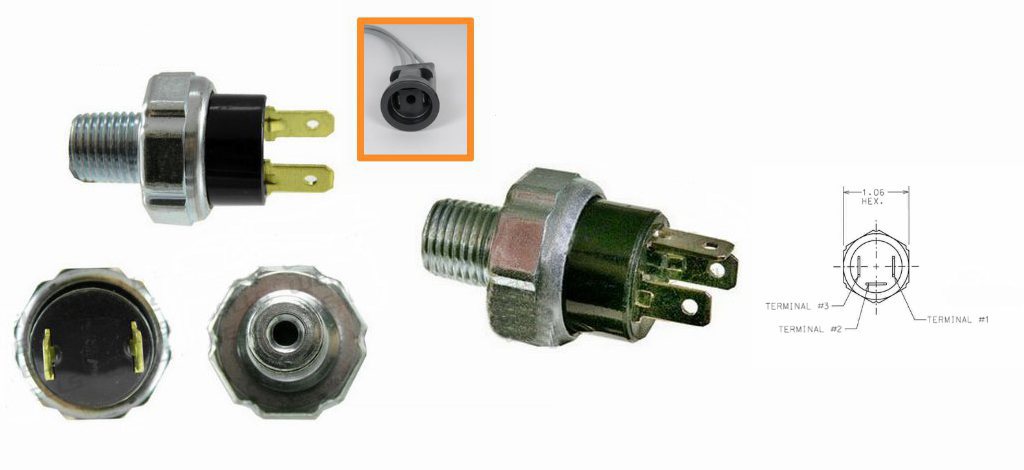
Inertia Switches
This is almost always overlooked when doing an electric fuel pump, most OEM vehicles have these in some obscure place. You should have one too, but make it accessible, and if in a race car even more so.
Not sure if these would work in a off road vehicle, but I'm mainly talking road cars here. I have picked up a couple of different types of these, but now falling back on the more common OEM parts. Amazon has a few types, but hit Summit, eBay as they seem to have lower prices. These are not cheap parts, but I'll bet the cost is mostly going towards insurance if one fails...
Lastly look for the inertia switches that come with a pigtail or harness. Trying to get OEM style connectors can be a pain in the a$$ and costly so make sure you get one that comes with the wires!
Relays, Relays, Relays!
Check out the Introduction to Automotive Relays tutorial this will help you find out everything you need.
Too lazy to click but still want to know? Get a Mini style Bosch cube style relay and harness and just follow the pin numbers, you should be good. Avoid the super cheap ones as they can be problematic if you are running a lot of current (Big pump guys...)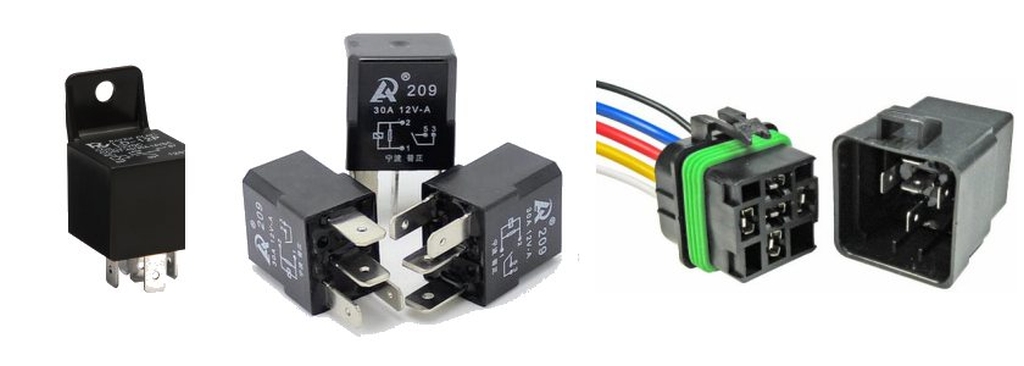
Fuses and Circuit Breakers - Use Them
Use them. If you need some guidelines look at the Headlight Relay Tutorial. It has some guidlines for fuse selection, relays and most is applicable to fuel pumps. A very rough estimate is to do 50% more fuse rating than your current draw. If you do blow fuses on start go up a bit more as pumps tend to draw a large amount of current when power is applied (Inrush current etc.)
Last word on fuses and circuit breakers... 'USE THEM'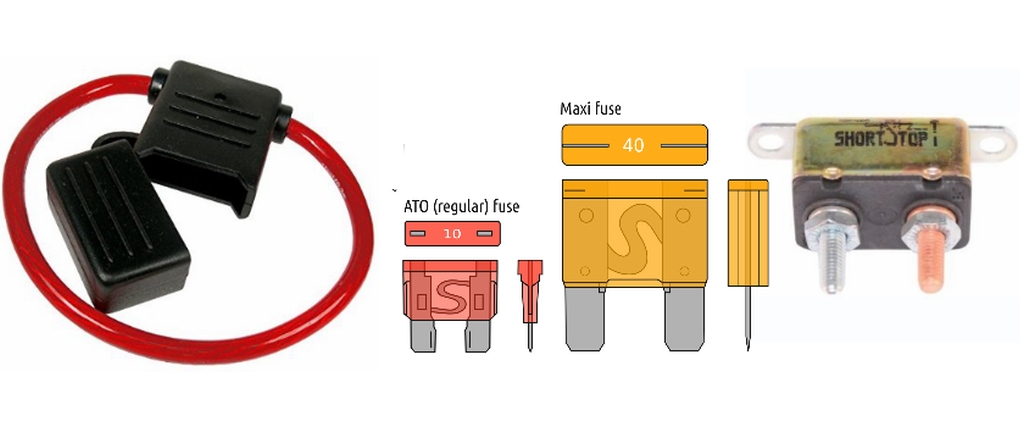
Diodes... WTF is a Diode??
WTF is a Diode you ask (skip if you already know)???
Simplest way to describe it is a diode is one way valve for electricity. We can use one to help with starting where we have no oil pressure built up yet. This can be an optional part.
If you are running a car with a carburetor you may get away without this part of the circuit. If you car builds oil pressure fast and you have fuel in the float bowls you are good. EFI cars may be a different story.
If you have an EFI car your ECU may control the fuel pump, but if going the manual route use the diode to turn on the pump once you hit the start button (or key). Diodes are inexpensive, the part numbers listed are very common.
Typically diodes have 2 leads one will have a white band next to it. Positive voltage will flow from the non-marked end towards the white band end. It will not flow in reverse. In our case we want voltage to flow to the relay when the starter switch is closed, bypassing all the safety switches so the car can start.
Once the car starts, you will have oil pressure and the pressure switch will close completing the circuit and energizing the the fuel pump. The trick is we do not want the voltage from the ignition circuit to get into the starter circuit, if it did your cars starter would never stop working. That's not what we want.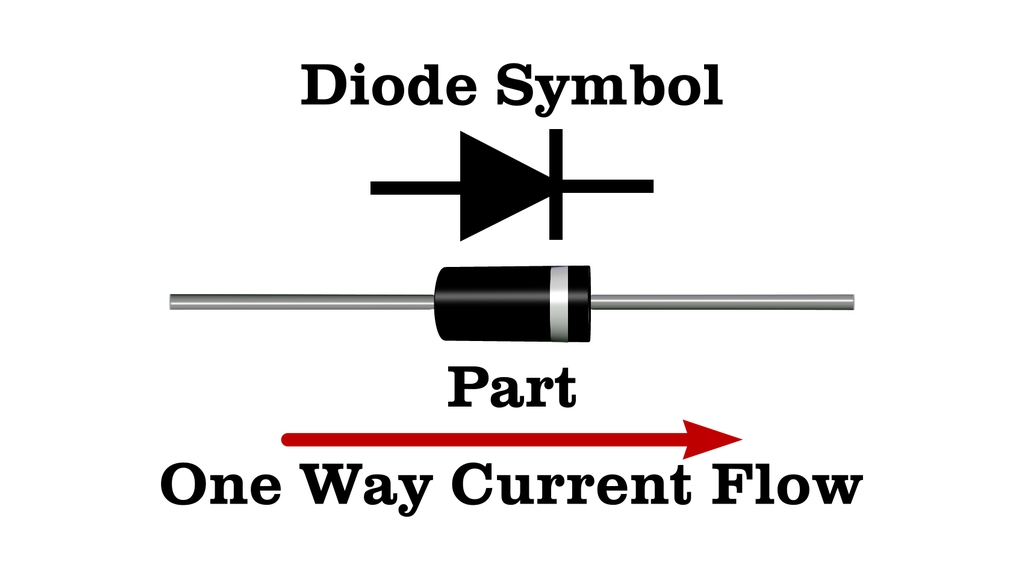
Low Oil Pressure Indicator
You can get creative here, I have used a couple of different style of truck side markers, and may work depending on where they are mounted.
Check out some examples here for some example, look for ones that are surface mount. If using LED make sure that they are bright and you can see them in daylight. Lastly some require a special connector ensure that it's included.
If you are not sure head out to the Autozone, Pep Boys, etc and rummage through their trailering section you will find something that will work.
Basic Safe Electric Fuel Pump Wiring Diagram
This is the basic wiring diagram for SAFE electric fuel pump wiring. The diagram is color coded per circuit and only a few things may need to be said.
Fuel pump wiring for the RED circuit is generally going to carry a much higher current than the relay. So use a larger gauge wire for lower voltage drop.
For big pumps try 12 gauge, for smaller smaller 14 gauge. You want to limit voltage drop by using a heavy gauge wire.
Check out the Wire Voltage Drop Calculator here to help with selecting the right gauge wire
For relays and related switches 16 or 18 gauge would be OK. The fuel pump ground should be the same gauge as the positive lead if not obvious.Basic Operation
Ignition is turned on, but no fuel pump due to the Normally Open pressure switch. Hopefully the inertial switch is OK an you are not upside down. If the inertia switch is OK, it's normally closed and will break the circuit in the event of a catastrophe.
Now you hit the start button, the voltage will pass through the diode to the relay, and the relay will close the circuit starting the fuel pump. Hopefully your car starts, and ultimately builds oil pressure which will close the oil pressure switch. This will enabling and sustain the fuel pump relay in the on position. Now you can drive away!
Once locked on by the ignition circuit the diode will BLOCK voltage back to the starter circuit.
Turing off the ignition will remove voltage from the relay, and shut off the pump. Oil pressure will be zero so the oil pressure switch will also be open circuit again.Something bad happens
You are in a race and blow your engine and have zero oil pressure, fuel pump will stop
You are in a race and end up in a smash up, inertia swich will open, fuel pump will stop
Replace 'You are in a race' with 'I'm driving to work', or other colorful phrases. You get the idea.
That's about it. It's not hard to make it safe and reliable. See below if you want the deluxe version!
Deluxe Electric Fuel Pump Circuit with Warning Light
Deluxe Fuel Pump Wiring with Blown Engine Light circuit above
This circuit is similar to the basic wiring diagram the same except you use a different pressure switch and add a warning light that directly watches the oil pressure.
The 3 Terminal pressure switch has an extra terminal that can be used exactly like the Oil Pressure warning Light. The switch actually is 2 Switches in one. One will be used exactly like the basic wiring diagram (Terminal 1 and 3). The extra terminal (Terminal 2) will close to ground (via engine block typically and body of the switch) when pressure is lower than a couple of PSI, and will open when the engine is making oil pressure just like the old idiot lights!
This can be connected to a bulb or side marker in my examples that will shine in the face of the driver. This won't stop your motor from disaster, but will limit how bad the damage is. Also, Don't say "I have gauges and always check...", what I have to say about that "if you're watching gauges you ain't driving hard enough"
Otherwise the circuit is very similar.Conclusion
This is a simple guide to safer wiring for your electric fuel pump. Spend some time wiring things up right and in the event of a problem it can save you a world of hurt (or fire).
Get your projects done and - Happy and SAFE motoring!